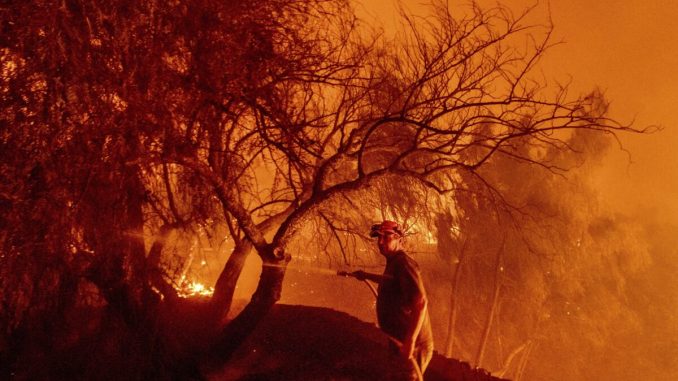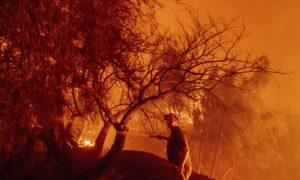

California’s wildfire season is getting longer, according to University of California–Irvine (UCI) environmental engineers, who say poor fire management practices contributed to the most wildfires.
In a study published April 22, UCI researchers analyzed California Department of Forestry and Fire Protection (CALFIRE) wildfire statistics from 2000 to 2019, comparing the data with the period of 1920 to 1999.
Researchers found the annual burn season was becoming longer, and more widespread.
“CALFIRE data show that each new year of the 21st century has been a record breaker in terms of wildfire damage in California,” Tirtha Banerjee, UCI assistant professor of civil and environmental engineering, said in a press release.
“We also have seen that about 80 percent of the total number of the state’s wildfires over the past few decades have been small, measuring less than 500 acres. But when fires get large, their deadliness greatly increases.”
The researching team deduced that about 20 percent of overall wildfires accounted for 97 percent of the total burned area during the 2000 to 2020 period.
“And more than nine-tenths of the casualties and property losses can be attributed to fires exceeding the 500-acre threshold,” Banerjee said.
Banerjee said that in the past two decades, there has been a significant increase in “extreme” wildfires scorching more than 10,000 acres.
The study found that places with extreme fire risk, or hot spots, have higher temperatures, less moisture, more drought, and more chance of experiencing a forest fire in recent years.
The study also reported a rapid uptick in the frequency of small, human-caused blazes.
Wildfire hot spots have also expanded in Southern California, from Los Angeles County to other regions, such as Ventura County, and portions of Riverside, San Diego and San Bernardino counties, according to the study’s lead author Shu Li, a PhD student in Banerjee’s laboratory.
Likewise with Northern California, newly-emerging hot spots have appeared, displaying signs as high-density wildfire regions.
“Before 2000, there were almost no human-caused wildfires along California’s Pacific coastline, but now nearly every coastal county is experiencing increased risk, and the San Benito-Monterey Unit and the San Luis Obispo Unit have even become new hot spots,” Li said in a press release.
Many of the fires occurring in Northern California are ignited by lightning, however the majority are a result of an expansion of wilderness-urban interface and bad fire management, according to the study.
The team also found that peak fire season has changed from August to July, in the past century.
Many of these fires are sparked by human causes, such as power lines igniting fallen trees, construction, campfires, transportation, and fireworks, the study found.
Said Banerjee: “Human-caused fire risk can be mitigated by better fire management practices by humans.”
The findings were published in the Nature Scientific Reports journal.






Be the first to comment